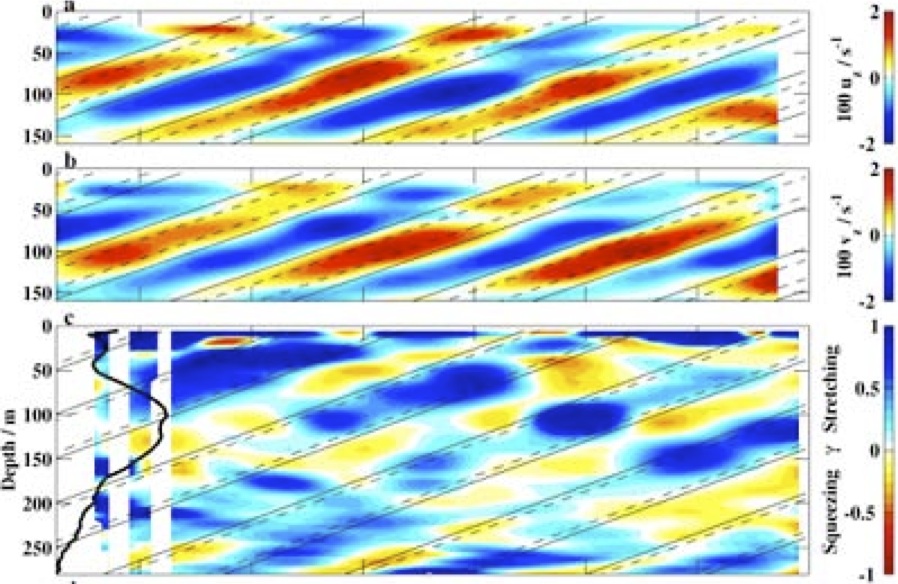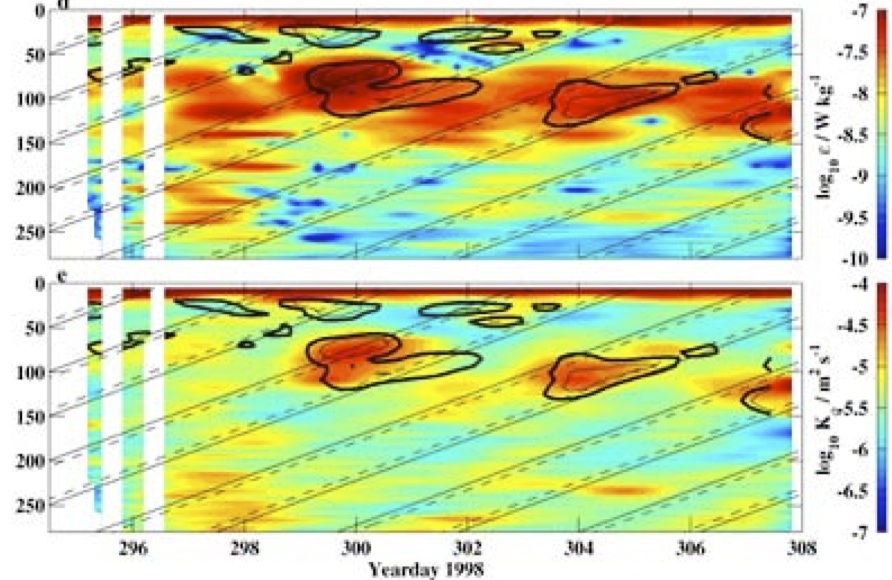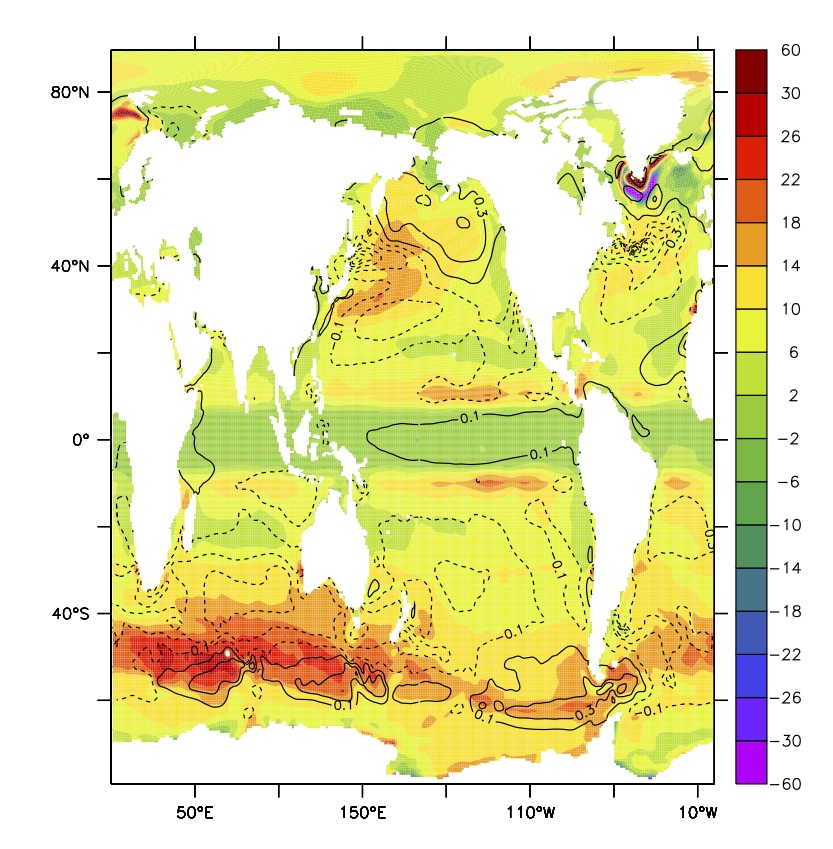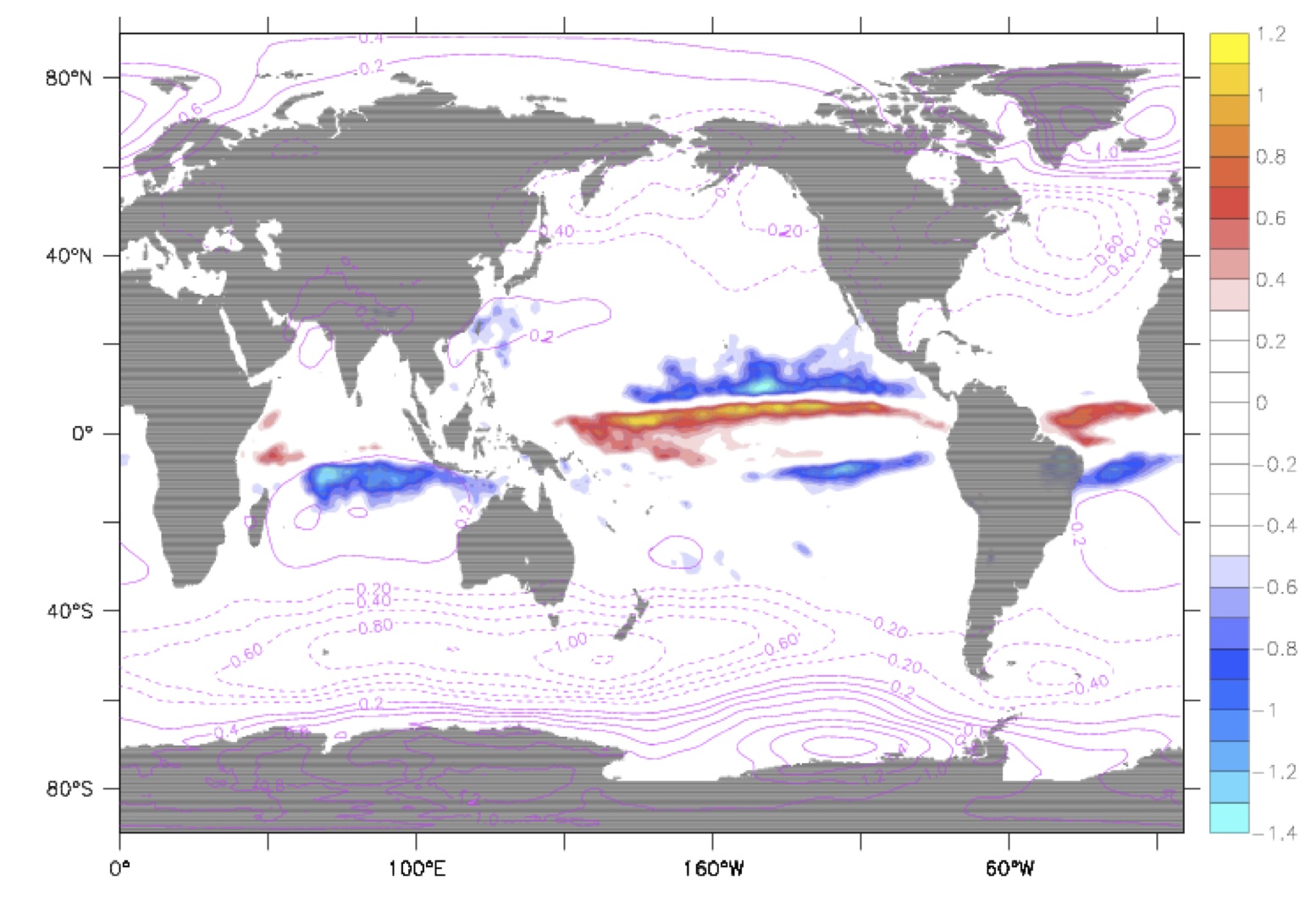work in progress
Nearfield: near-inertial wave dissipation in the upper ocean
Time variable wind stresses produce inertial motions in the surface mixed layer of the ocean. Horizontal convergences and divergences of these motions can produce vertical velocity at the base of the mixed layer, which in turn creates vertically propagating internal waves with a frequency close to the local inertial frequency. The shear and strain associated with energetic near-inertial internal waves can dominate turbulence in the upper ocean, as can be seen in this example from the Banda Sea
 |
 |
Many global ocean models do not explicitly include such wind generated inertial motions because the ocean and atmosphere are not coupled frequently enough for the ocean to feel the inertial component of wind stress. Jochum et al 13 present results from the first thorough attempt to incorporate mixing associated with near-inertial motions into global circulation models. They do this in two parts. First, they simply increase the atmosphere-ocean coupling rate to 2 hours, which allows generation of inertial motions in the upper ocean. The associated inertial shear at the mix-layer base triggers existing mixed-layer deepening paramterizations. Second, they apply essentially an upside-down version of the St. Laurent et al 02 tidal mixing parameterization to account for breaking high-mode near-inertial internal waves in the upper ocean. This is admittedly somewhat ad-hoc, but represents a good start. The results show dramatic changes in both mixed-layer depths and precipitation patterns, the latter because changing the rate at which heat is mixed downward out of the surface ocean changes the heat available for air-sea interaction.
 |
 |
Figure 2: Changes in ocean surface mixed layer depth (left) and precipitation (right) when near-inertial motions and associated mixing are include in a coupled global model. Reproduced from Jochum et al 2013.
Efforts underway now include revision and refinement of the parameterization to more carefully consider the rate at which surface inertial motions transform into propagating internal waves, comb through existing data to understand the vertical decay rates, and explore the no-doubt substantial effects of mesoscale vorticity on wave generation, propagation, and decay.
As with the internal tide, a substantial fraction of near-inertial internal wave energy escapes in the form of long-range propagating low-mode internal waves, dissipation of which is discussed here.
 |
We gratefully acknowledge funding from
NSF and NOAA |
 |